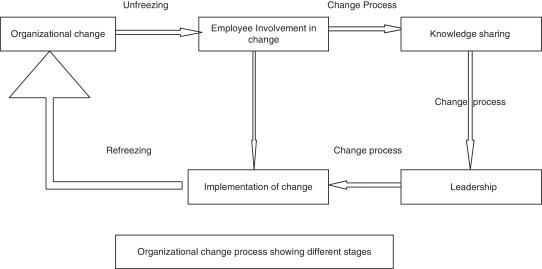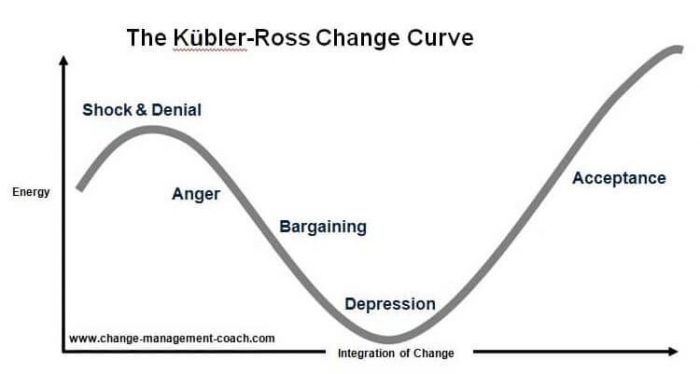If you are in the organizational paradigm, change is inevitable whether you like or not. It’s for our good if we change with the times because if the business doesn’t adapt, it will ultimately die in this unforgiving market.
In every way of life, resistance is ever-present. Humans don’t like change and they will inevitably raise arms against it. This resistance can either be good or bad depending on the situation and nature of change because not every change is bad.
The change management process is then the only way companies can save their business from going under in the long run. This process is a challenge that the whole team has to complete to bring value to the company and gain success.
If you are just starting as an entrepreneur or if you are a veteran of the field, you would have heard about change management. This is a very famous topic that is written and talked about from the very first day the people got into the field of management.
When your team incorporates change management, they are understanding all of the challenges that they are about to face in the product development process, preparing for all of the changes that are about to come in their way and carry out all of the crucial implementation phases to achieve their goals and milestones.
In this article, we will tell you about what exactly is change management, what are the change management models that are used in the market nowadays and 6 critical steps that you need to implement to execute a successful change management process.
Let’s start at the very beginning.
What is Change Management?

When your management team tracks the whole scenario and identifies that there is a need to change some elements of the development process, the temptation to implement change right off the bat with no process, is very tempting.
But you have to resist that temptation otherwise you’ll be lost in the first round.
To successfully execute change in any situation or business, or in general, you need to have a plan and you need to make the transition phase for the change, manageable.
The first thing that you need to do is to prepare your team so that they are completely on board with the idea that change is coming and it will consist of this and that.
Next, all of the upper management has to be there for the team to guide and support them through the change process. This can include spending more resources, extra training for the employees that need it.
But mostly, this support is to make sure that the team is not disheartened or it doesn’t lose any of its flair which will result in poor performance, low productivity, and low yield for the company in the long run.
To be honest, change management is really hard. Mostly because your employees have been performing these activities for a while now with the same techniques and they were always the “right” ways to do it.
Now the upper management comes along and says that the procedure that they are using is wrong and the company needs to go in a different direction. Just be prepared that resistance against any change is inevitable whether you like it or not.
Researches have shown that over 70% change initiatives in the organizational paradigm don’t reach their desired goals.
This doesn’t mean that you reject the idea of change even before you perform the first step of change management. But it does mean that the next step that you are going to take to implement change, have to take very carefully if you want the whole process to succeed.
Firstly, for change management to succeed and have any sort of impact, you need to have the full support of everyone involved in the company. This means all of the management and all of the employees of the company. Without that, the change management process is a bust from the start.
What are Change Management Models?
Change management is very hard if you are shooting in the dark, hoping to score a kill. You need to have a template with you for guidance. That template is the Change Management model that has been developed and proved by experts to achieve success. They are:
1. ADKAR

This is an acronym that depicts an effective CM process in terms of the different phases the employees of the company have to go through, as a part of their journey. This ADKAR model stands for:
- Awareness about the change that is badly needed
- Desire to implement all of the changes presented by the management
- Knowledge of every step you need to take to implement successful change
- Ability to execute the new and improved way of working
- Reinforcement of the new and improved methodology to have it implemented in the long run
To execute a perfect change management process, you have to make sure that your employees go through each of the five steps.
2. Lewin’s Model

Courtesy: ScienceDirect
According to the Lewin model, you can culminate in the whole change management process in three phases. They are:
- Unfreeze: As you know that a solid block of ice has a fixed shape that can’t be changed unless you break it. So, if you want to change the shape of ice another way, you need to melt it. This is what you have to do to change the mindset of the people about doing some things in a certain way by “unfreezing” them.
- Change: After unfreezing, the people are ready to change for good and at that moment you can begin the implementation. But as you know, there are bound to obstacles when implementing a change like unforeseen pressures and difficulties both internal and external. This is when your team will need your support to execute this change successfully.
- Freeze: The unforgiving phase of change has passed. You have made all of the vital adjustments to your procedures and you are completely ready to cement the new shape of your company and its business. This will you “Freezing” the new way of doing things in the minds of the people forever.
3. The Kubler-Ross Model

This model is a special one as it deals with the feelings of the people it is being executed on, as they are going through the change process. A complete understanding of this model will help you get ready for their reactions as you embark on this journey to implement a successful CM process.
- Denial: This is the first stage where they will deny that they need a change in the first place
- Anger: They will succumb to anger when they will realize that their way of doing things was wrong and they have to learn new techniques to do the old work
- Depression: They will be saddened and afraid of things changing but they will start to realize that change is inevitable whether they like it or not
- Bargaining: They will start to bargain about different things and push the management to keep certain things as they are
- Acceptance: In this stage, they will realize that they have to change and they will try to do the best they can to learn the new ways of doing things
What are the Critical steps to implement a Successful Change Management Process?
As we know, every change management process is somewhat unique in their way. All of the goals associated with your company, the culture that you have created inside your company, and the environment that you need to operate, give the change process the uniqueness it contains.
But although most of the elements like technical details and such differ from company to company in the organizational paradigm, the main principles on which change management is based, remain the same.
Just follow these steps and you will have a successful change management process at your disposal.
1. Start with the Objective

In every walk of life, whenever you are about to set out on a journey of any kind, you need to have a proper destination in mind that you want to get to. When you are preparing to change something, you have to make sure that you know what your current position is and where you want to end up.
Make sure that you define this new definition as clearly as you can, because if you don’t have it committed to memory, how can you expect the whole company to share your vision.
2. Tempt Your Management team with the “Need for Change”

You might have the best changes in mind, but if you don’t tempt your upper management to share your vision, it will all be for nothing. What you require for this is two-way communication.
Identify the key problem that you want to disappear and get their input about that. When everyone has had their say, you would finally have a considerable amount of data that you can analyze and use to get them on board.
3. Identify the Important Members that can Support Change
People supporting your change management process are all well and good, but the main question is “Are these people influential?”. Not every one that supports your idea is going to be a manager or a managing director.
So, to make sure that your change management process is heard by and supported by the whole company, you need to have a few influential people in your arsenal that can help you impose that change.
4. Communicate the Vision of Change to the Masses

At the start of the process, you gathered all of these amazing ideas regarding change and you formulated a proper change management process that you need to implement.
But gaining two or three followers even if they are at higher positions, is not going to get you any headway if you want your vision to be shared with the whole company.
You need to get more people behind your idea and for that, you need to talk to them and gather their concerns. This will help you get to know them and get you the chance to answer their concerns through the change you’re trying to impose.
5. Remove Obstacles

While preparing the people to embrace the change that you want to impose, you also need to make sure that there are no obstacles present in the way of your change champions. These obstacles can include:
- A need for a new IT infrastructure or new hardware
- A need for additional training or some new skills to be acquired
- An organizational obstacle that stands between you and changes’ implementation
Infuse all of the Changes in the Company Culture
When all of the changes have been reviewed and perfected, and all of the obstacles have been removed from the implementation of these changes, the last step is to incorporate all of the changes that you have gathered into the working company culture.
But even when you do that, there are a lot of different things that you need to improve. This is why change management is a continuous cycle in which you have to up your game and change your strategies as you move along in the process.

